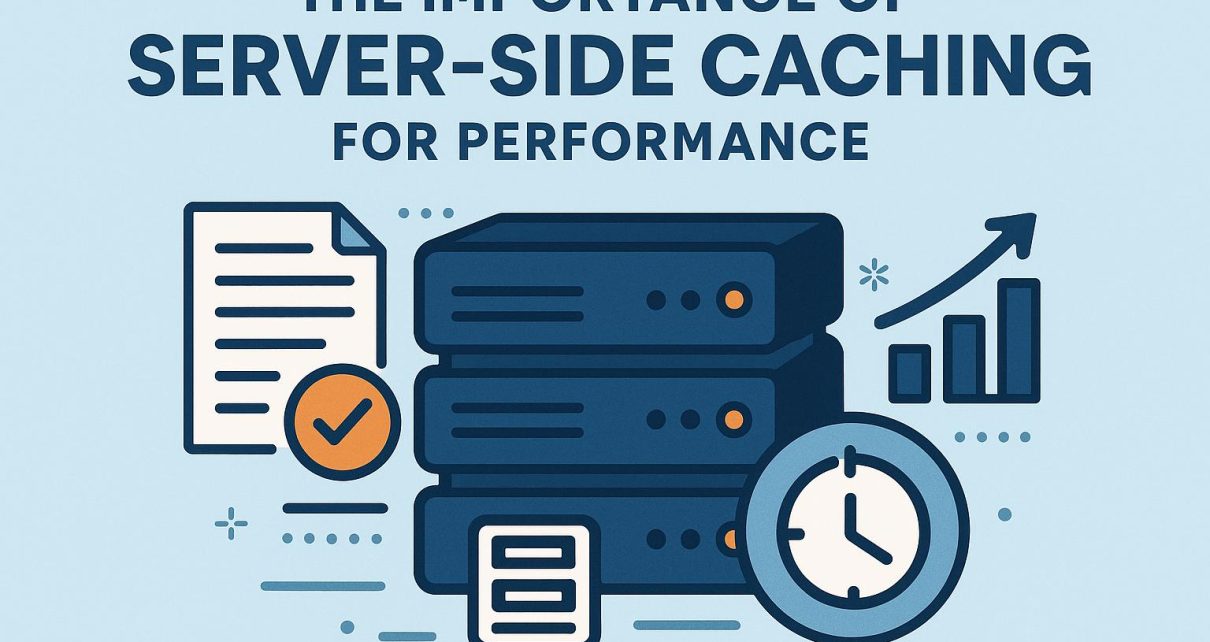Understanding Server-Side Caching
Server-side caching is an essential component in optimizing the performance of web applications. By temporarily storing the data of server responses, server-side caching minimizes the requirement for repeated database queries and complex calculations. This mechanism significantly enhances response times and reduces the load on servers.
How Server-Side Caching Works
The standard process for serving content to a user involves the server retrieving data from a database and processing it to create the final output. When server-side caching is employed, the output from the initial data retrieval and processing is saved in a cache. For future requests for the same content, the cached data is used, allowing the server to bypass the entire retrieval and processing sequence. This approach ensures that frequently requested data can be served rapidly, optimizing user experience and conserving server resources.
Benefits of Server-Side Caching
Improved Performance: Leveraging cached data allows servers to drastically reduce page load times, which in turn improves user satisfaction. Faster load times are a significant factor for search engine optimization, as search engines prioritize websites that offer quicker access to content.
Reduced Server Load: Caching decreases the pressure on both the server and the database, empowering them to accommodate a larger number of simultaneous requests. This feature is particularly useful during peak traffic periods when servers may struggle to manage numerous incoming requests.
Cost Efficiency: By diminishing the need for frequent computational processes and data queries, server-side caching aids in reducing the operational expenses linked to server upkeep and data processing.
Types of Server-Side Caching
Various caching strategies exist, each serving distinct purposes and contexts.
Object Caching
Object caching involves storing frequently accessed data objects. It is particularly useful in scenarios where applications require complex queries to generate data structures or objects, thus enabling applications to quickly retrieve pre-assembled outputs without rebuilding them from scratch.
Page Caching
Page caching stores the HTML content of entire web pages. When such a page is requested, the server can immediately return the stored HTML. This mechanism avoids the repetitive construction of the page, saving time and computational resources.
Opcode Caching
For interpreted languages like PHP, opcode caching can be instrumental. This method caches the compiled bytecode of scripts, which eliminates the need for recompiling the script on subsequent runs, thereby conserving processing time and resources.
Implementing Server-Side Caching
A thoughtful approach is essential when implementing server-side caching to ensure alignment with the particular needs of an application. Some of the commonly used tools and systems for caching include:
Redis and Memcached: These in-memory key-value stores are widely popular for their ability to retrieve data quickly. Their speed and efficiency make them a preferred choice for many developers seeking robust caching solutions.
There are multiple ways to integrate caching strategies, whether through server-side languages directly or through content management systems that offer various caching plugins and modules tailored to different requirements.
Challenges and Considerations
Despite the many advantages of server-side caching, certain challenges must be acknowledged. A critical task in caching is establishing an appropriate cache invalidation policy to ensure users always receive the most current and accurate information. This is especially pertinent for dynamic applications where content is subject to rapid change, as stale or outdated data can result in inconsistencies and a poor user experience.
Furthermore, allocating memory wisely is pivotal, as cache storage depends predominantly on memory capacity. Balancing this aspect with other application resources is vital for sustaining optimal system performance.
Server-side caching is a potent technique for refining web application performance, cutting down on operational spending, and bolstering user satisfaction. As web technologies and user expectations advance, the importance of effective caching strategies will escalate, remaining a cornerstone in maintaining responsive and efficient applications.




